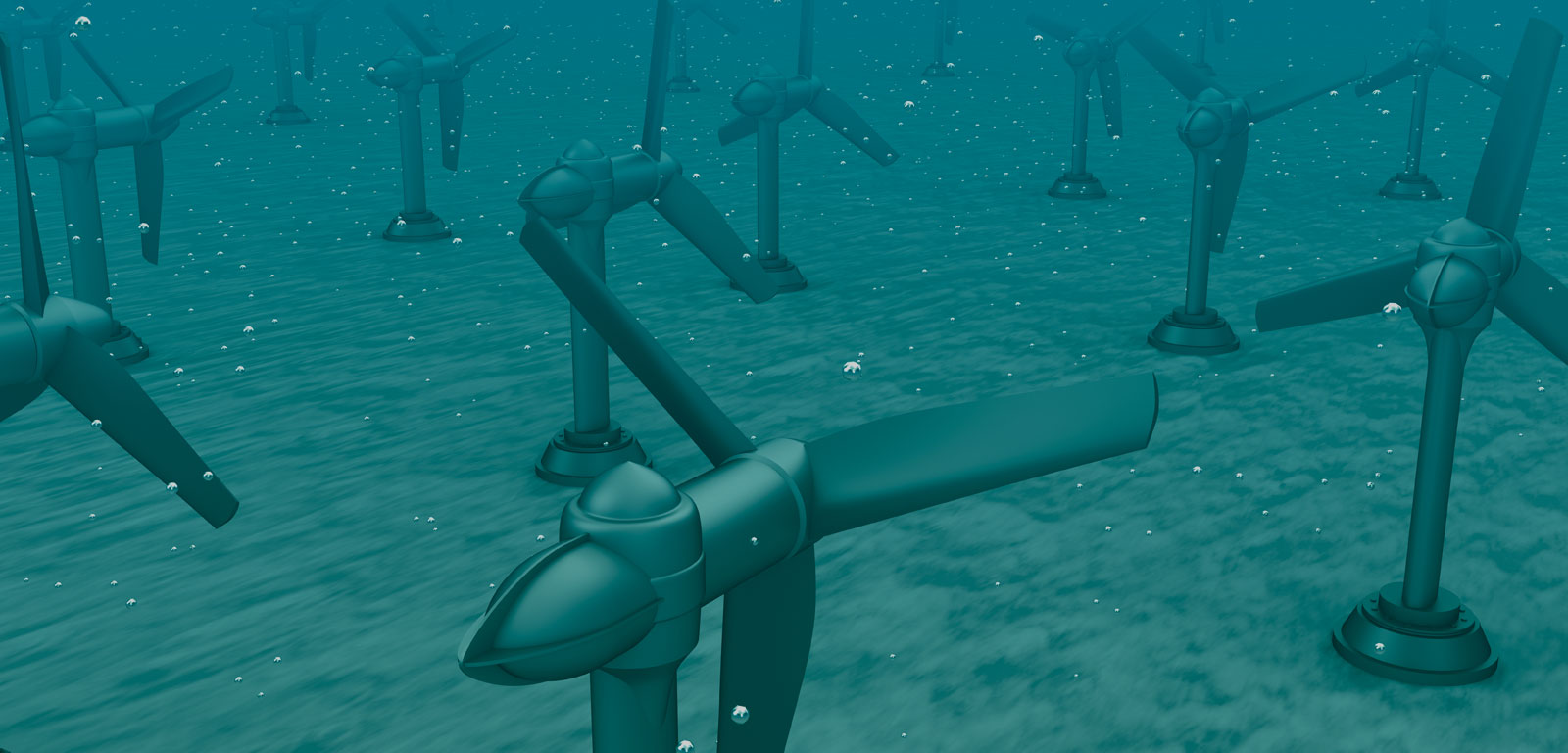Subject
Water waves and sea states modelling
General details of the subject
- Mode
- Face-to-face degree course
- Language
- English
Description and contextualization of the subject
This course intends to describe the main source of loading for structures at sea (e.g. marine renewable energy systems), namely ocean waves. This is essential for the design of such structures and is the starting point of all hydrodynamics¿ studies (see courses: wave-structure interactions, experimental hydrodynamics, marine renewable energy, etc.).First we give an overview of some of the numerous mathematical models used to represent free surface gravity waves, and the associated underlying flow. The scope is voluntarily restricted to the most useful models generally used by naval engineers and researchers. In a few cases, a deeper theoretical insight is presented in order to allow the students to understand the subtleties of water wave theory.
In the second part, the use of the statistical approach is presented, both for the representation of sea states and for the sea structure¿s response.
Teaching staff
| Name | Institution | Category | Doctor | Teaching profile | Area | |
|---|---|---|---|---|---|---|
| BLANCO ILZARBE, JESUS MARIA | University of the Basque Country | Profesorado Titular De Universidad | Doctor | Not bilingual | Fluid Mechanics | jesusmaria.blanco@ehu.eus |
| EGUIA LOPEZ, PABLO | University of the Basque Country | Profesorado Agregado | Doctor | Not bilingual | Electrical Engineering | pablo.eguia@ehu.eus |
| MARTINEZ DE ALEGRIA MANCISIDOR, IÑIGO | University of the Basque Country | Profesorado Agregado | Doctor | Bilingual | Electronic Technology | inigo.martinezdealegria@ehu.eus |
Competencies
| Name | Weight |
|---|---|
| Explain the purpose of Hydrodynamics modeling in Marine and Ocean Engineering today | 20.0 % |
| Explain and demonstrate knowledge and understanding of the main mathematical models to describe Free Surface flows | 20.0 % |
| Determine and Explain which mathematical model is adapted for which problem of Hydrodynamics | 20.0 % |
| Explain and demonstrate knowledge and understanding of the main aspects of numerical simulation in Hydrodynamics | 20.0 % |
| Acquire new skills, organize information | 20.0 % |
Study types
| Type | Face-to-face hours | Non face-to-face hours | Total hours |
|---|---|---|---|
| Lecture-based | 22 | 22 | 44 |
| Seminar | 4 | 14 | 18 |
| Applied computer-based groups | 14 | 24 | 38 |
Training activities
| Name | Hours | Percentage of classroom teaching |
|---|---|---|
| Autonomous work | 24.0 | 0 % |
| Classroom/Seminar/Workshop | 4.0 | 100 % |
| Expositive classes | 22.0 | 100 % |
| Groupwork | 14.0 | 0 % |
| Systematised study | 22.0 | 0 % |
| Working with it equipment | 14.0 | 100 % |
Assessment systems
| Name | Minimum weighting | Maximum weighting |
|---|---|---|
| Drawing up reports and presentations | 40.0 % | 60.0 % |
| Written examination | 40.0 % | 60.0 % |
Learning outcomes of the subject
To know the physical processes that take place in the propagation of wavesTo explain and to demonstrate knowledge and understanding of different wave models and the response of structures
To apply numerical methods to study wave propagation and its interaction with structures
Temary
Lesson 1 Introduction to marine environmentDescription of the ocean and the different kind of waves existing. Focus on the gravity waves and the processes responsible for their generation.
Lesson 2 Gravity waves modelling
Derivation of the governing non-linear equations and introduction of the multiple scale method to generate particular subset of equations
Lesson 3 Dispersive waves
a) Airy Potential; derivation of the solution by separation of variables. Expression of all the related physical quantities: group velocity, energy density, energy flux, limits of the linear model.
b) Higher order Stokes solutions (3rd order, 5th order). Sequential construction of the Stokes higher order solutions. Specific nonlinear features of Stokes waves.
c) From deep to shallow water
i) Refraction and shoaling of dispersive waves
ii) Shallow-water (non-dispersive) waves
Lesson 4 Statistical models for wave field description
a) Random sea state modeling.
b) Usual wave spectra models.
c) Wave generation.
Lesson 5 Random responses of structures at sea
a) Random responses of a linear system.
b) Review of the results for ship responses by a deterministic theory.
c) Motions on a real sea state.
d) Extreme responses, design factors.
Bibliography
Basic bibliography
¿ Robert G. Dean & Robert A. Dalrymple, Water wave mechanics for engineers and scientists, Advanced Series on Ocean Engineering (vol.2).¿ A.J. Hermans, Water waves and ship hydrodynamics: an introduction.
¿ C.C. Mei, M. Stiassnie & D.K.P. Yue, Theory and application of ocean surface waves, Advanced Series on Ocean Engineering (vol.23). Part I: Linear aspects ; Part II: Non-linear aspects


